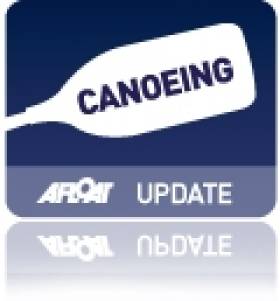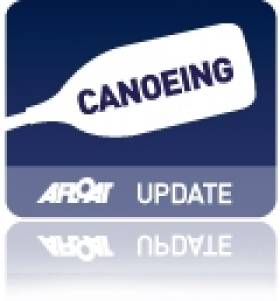Displaying items by tag: Hannah Craig,
# CANOEING: A very good second run in the heats, when she was under real pressure to perform, gave Ireland’s Hannah Craig a place in the semi-finals of the Olympic Games today. Eoin Rheinisch had qualified in the canoe slalom in the men's K1 on Sunday.
The course at Lee Valley proved extremely testing for the competitors in the women’s K1 canoe slalom. The top 15 of 21 qualified, and Craig clocked 117.07 seconds for her first run, which placed her 14th for the first run. This included eight seconds in penalties. The time put her into second place at this stage behind Luuka Jones of New Zealand who clocked 109.23. However, the top competitors then pushed through, with Maialen Chorraut of Spain setting an outstanding time of 98.75 seconds. But some of the top canoeists in the world, including Jessica Fox of Australia and Corinna Kuhnle of Austria did poorly on the first run and lay behind Craig, with every chance they would push Craig out with their second runs: the Irishwoman knew she had to improve to be sure of making that top 15.
Her second run looked better from the start. She moved sweetly all the way to the really difficult gate 12, on which she lost some time, but she found her way again and only a clip on gate 19, bringing her a two-second penalty, tainted a fine round of 108.99 seconds.
Fox and Kuhnle did indeed set excellent times in their second runs, ensuring that even the better second run only secured 14th place for Craig. Jones took the 15th spot.
Olympic Games – Canoe Slalom – Women’s K1 Heats (First 15 qualify for semi-final): 1 Spain (M Chorraut) 98.75 (1st run); 14 H Craig 108.99 (2nd run).
Craig Books Her Place in Canoe Slalom at London 2012
#CANOEING: Hannah Craig is set to represent Ireland at the Olympic Games in London in the K1 racing kayak. The Antrim woman finished 25th at the European Canoe Slalom Championships in Augsburg today, the highest position occupied by a boat from a country not already qualified. Elise Chabbey of Switzerland took the second place on offer by finishing 32nd.
Canoe Slalom European Championships, Augsburg, Day Two
Women
K1 (racing kayak) Heats (1st and 2nd runs): 1 Germany (J Schornberg) 99.26 seconds (2nd run); 25 Ireland (H Craig) 105.69 (2nd run); 32 Switzerland (E Chabbey) 109.32 (2nd run) 47 Ireland (H Barnes) 112.14 (1st run); 40 Ireland (A Conlon) 120.18 (1st run).

























































